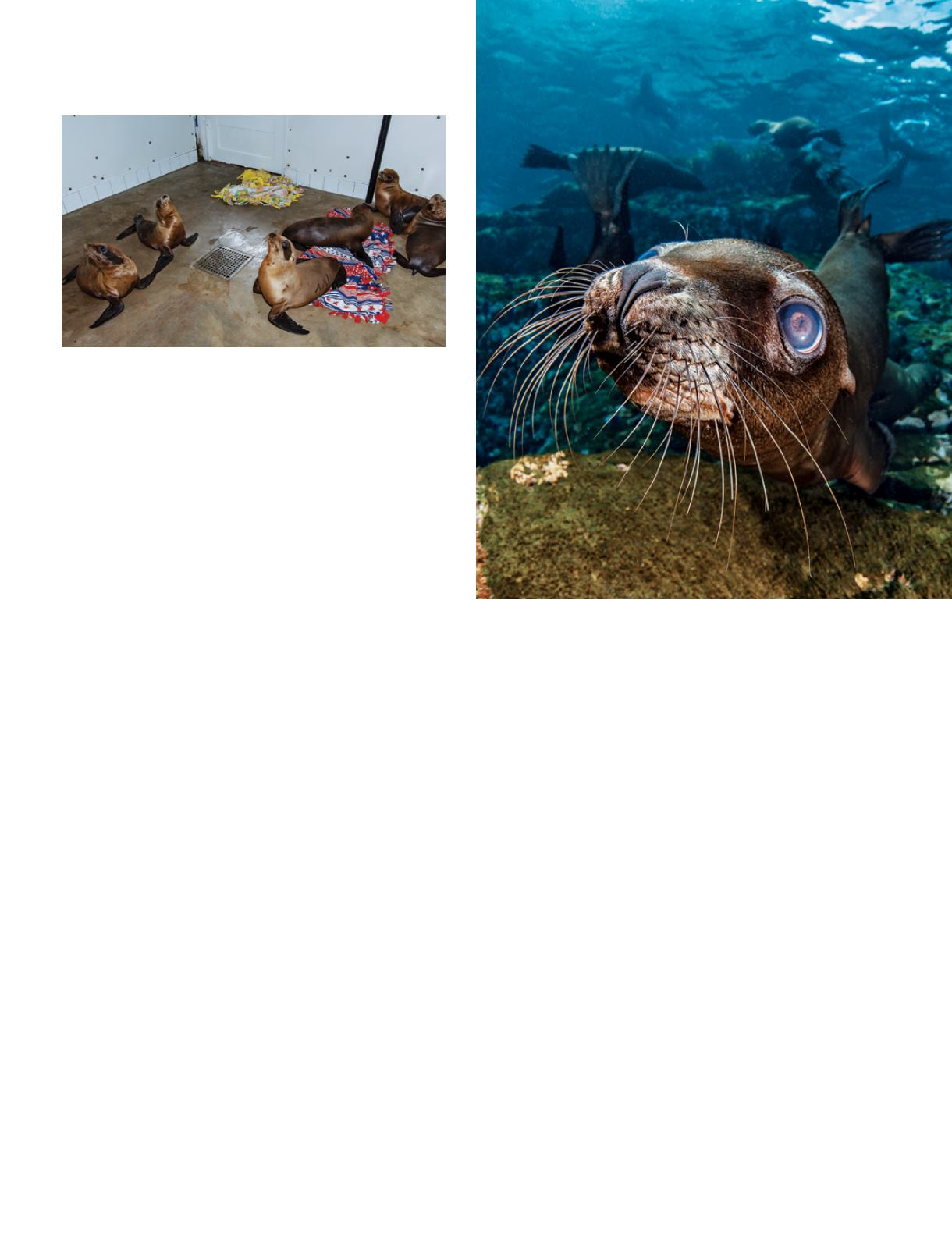
20
|
fall 2013
DIVE SLATE
//
While it’s not clear why there has been a recent spike in malnourished
sea lion strandings, residents and veterinary professionals are rallying
to the animals’ aid in the hopes of seeing more happy and healthy sea
lions frolicking in the surf.
K
neeling on the floor of the animal-care center
surrounded by barking patients, I was reminded
of veterinary school — with one major
difference. The pens here were filled not with
dogs but with pinnipeds. Dr. Richard Evans, the veterinarian
for the Pacific Marine Mammal Center (PMMC) in Laguna
Beach, Calif., knelt beside me and examined a 28-pound
California sea lion nicknamed O’Brien. A local resident
had discovered the exhausted and shivering young sea lion
near the shoreline and had contacted the PMMC rescue
team. The little pup was critically malnourished; extreme
nutritional problems are difficult to overcome in such a
young animal. It was unlikely O’Brien would survive.
A glance at the PMMC’s busy staff and full pens revealed
the extent of the well-publicized crisis. Early in 2013,
marine mammal rescue operations throughout Southern
California began reporting record numbers of California sea
lion strandings. The California Marine Mammal Stranding
Network, for example, reported 293 strandings in Orange
County between January 1 and March 31, 2013, compared
with a total of 20 during the same period in 2012. Affected
animals were almost exclusively pups born in 2012, and they
were nearly always emaciated and dehydrated, many fatally so.
This was not news to avid Southern California divers, many
of whom had witnessed exhausted pups hauling themselves
onto dive-boat decks at sites miles from shore or watched
lifeguards sadly remove dead pups from beaches. Nor was
it surprising to coastal residents from San Diego to Santa
Barbara; they had been inundated with broadcasts about
homeowners discovering starving pups on their property.
Marine mammal organizations in the area were quickly
overwhelmed. At the peak of the crisis, the PMMC housed
an overwhelming 167 patients and had reached their absolute
limit. The staff was regularly working 16-hour shifts, and
volunteers from the U.S. Navy Marine Mammal Program
were donating their time to help feed the recovering pups.
While it was clear to conservationists, government
officials and residents that something abnormal was
happening, the reasons for the situation were unclear.
According to the website for the National Oceanic and
Atmospheric Administration (NOAA) at the time of this
writing, the reasons remain uncertain. No infectious or
toxicologic (including radiologic) causes have been publicly
identified, and no other marine mammal species appear to
be affected.
Population increases in California sea lions (NOAA
estimates a steady year-to-year increase of 5.4 percent) don’t
seem to account for such a massive single-year increase in
strandings. Although sea lion populations have experienced
abrupt, precipitous declines in El Niño years, the 2013
incident did not correspond with a declared El Niño
weather phenomenon. Still, the most obvious scapegoat is
environmental factors. Food shortage seems likely to be a
major component: A 39-year investigation by the Scripps
Southern
California
Strandings
California sea lions face
a mysterious crisis
ANDY SALLMON
andy sallmon


